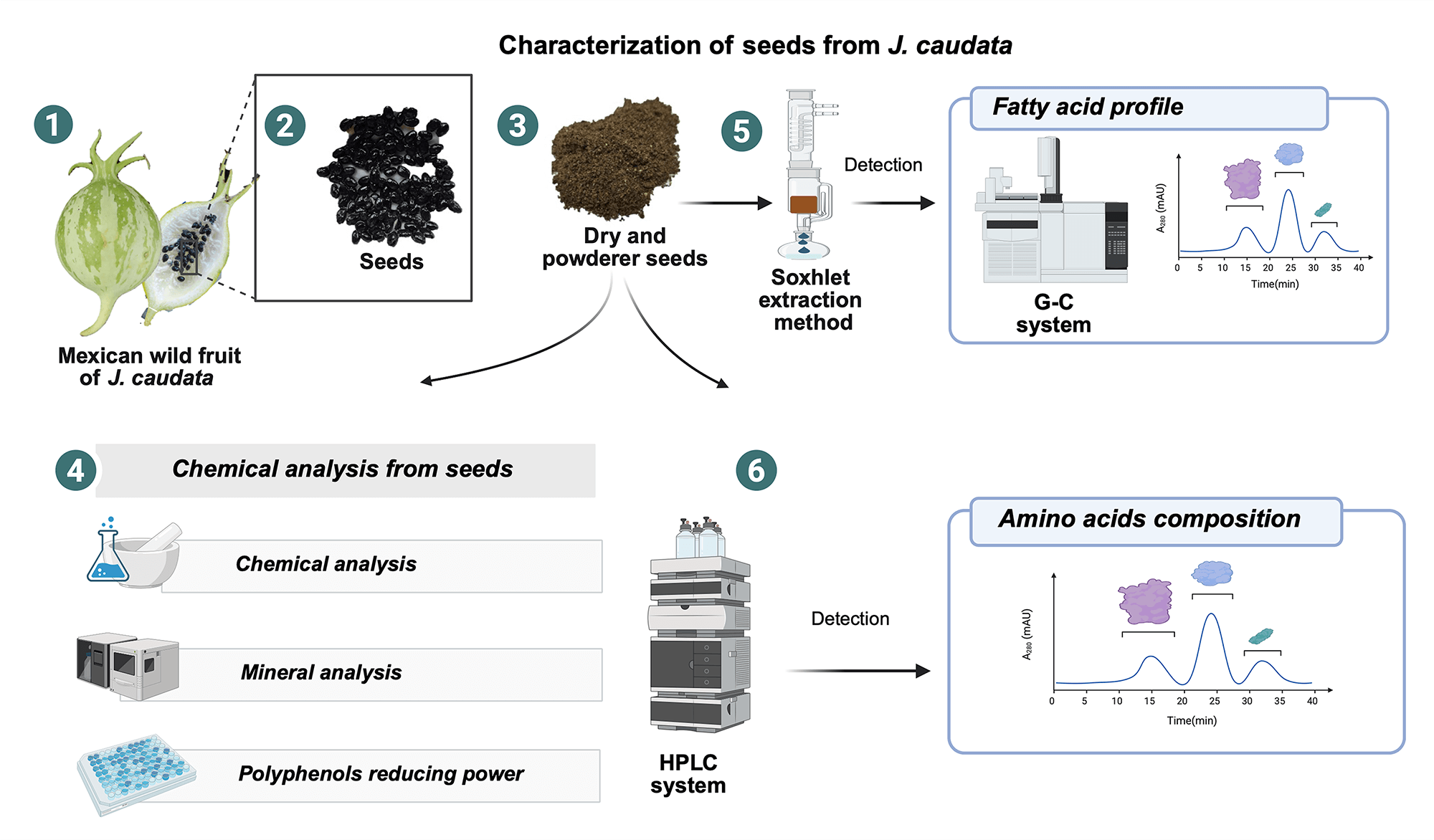 Open Access
Open Access
ARTICLE
Chemical Characterization of Jarilla caudata Seeds from Mexico
1 Centro Universitario de Ciencias Biológicas y Agropecuarias, Universidad de Guadalajara, Camino Padilla Sánchez No. 2100, Zapopan, Jalisco, 45101, México
2 Instituto de la Grasa (C.S.I.C.), Campus Universidad Pablo de Olavide, Carretera de Utrera km 1, Sevilla, 41089, España
* Corresponding Author: Juan Francisco Zamora Natera. Email:
(This article belongs to the Special Issue: Plant Chemistry and Environmental Sustainability: Challenges and Opportunities)
Phyton-International Journal of Experimental Botany 2025, 94(5), 1533-1544. https://doi.org/10.32604/phyton.2025.064966
Received 28 February 2025; Accepted 21 April 2025; Issue published 29 May 2025
Abstract
Jarilla caudata Standl. (Caricaceae) is a wild herbaceous plant native to Mexico recognized for its edible fruits. It is considered to be the closest taxonomically species to Carica papaya L. (Caricaceae), whose seeds have good nutritional and functional properties. This study analyzes and compares the seed chemical compositions of J. caudata and C. papaya to study the nutritional and functional potential of J. caudata seeds. The analysis of the proximate composition was based on standard methods. High-performance liquid chromatography was used to determine the free amino acid profile, gas chromatography to quantify the fatty acid content, and inductively coupled plasma–optical emission spectrometry to measure minerals. Both J. caudata and C. papaya seeds have high protein (24.03% to 26.94%) and lipid (21.32% to 25.07%) content. The mineral study indicated high potassium, calcium, iron, and zinc content. Minor functional compounds present, with similar contents in J. caudata and C. papaya seeds, were soluble sugars, phytic acid, polyphenols, and pectin. The main fatty acid in seed oil was oleic acid (C18:1), with 61.4% in J. caudata seeds and 72.6% in C. papaya seeds. Among free amino acids, leucine with 6.9/100 g free amino acids and phenylalanine with 13.6/100 g free amino acids were the most abundant in the seeds of J. caudata and C. papaya, respectively. Polyphenols of J. caudata and C. papaya seeds showed similar antioxidant activity. J. caudata seeds may represent a useful source of nutritional compounds for food and feeding, and functional compounds with antioxidant activity.Graphic Abstract

Keywords
Cite This Article
 Copyright © 2025 The Author(s). Published by Tech Science Press.
Copyright © 2025 The Author(s). Published by Tech Science Press.This work is licensed under a Creative Commons Attribution 4.0 International License , which permits unrestricted use, distribution, and reproduction in any medium, provided the original work is properly cited.


 Submit a Paper
Submit a Paper Propose a Special lssue
Propose a Special lssue View Full Text
View Full Text Download PDF
Download PDF Downloads
Downloads
 Citation Tools
Citation Tools